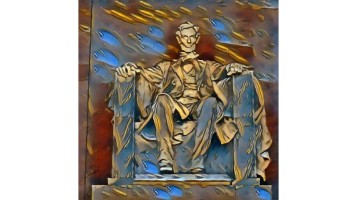Salvador Dali’s special style is incredibly influential and has inspired artists for decades. If you’re looking for inspiration for your art, to use Dali in your style transfers, or just trying to understand why he’s famous, this article covers all aspects of Dali’s famous style.
Salvador Dali used surrealism and symbolism in his painting style. He was influenced by Freud’s psychological theories and often tried to tap into his subconscious so he could paint images. He created a technique called the paranoiac-critical method to induce irrational thought while painting.
Often, Dali would stand on his head so that blood would rush to his brain and help induce irrationalism and a change in perspective. This would help Dali create his dream-like paintings. [8] Who was Dali to use these unique methods?
| Artist Facts | Info |
|---|---|
| Full Name | Salvador Domingo Felipe Jacinto Dali i Domenech |
| Date of Birth | 11 May, 1904 |
| Date of Death | 23 January, 1989 |
| Location | Figueres, Catalonia, Spain |
| Movements | Cubism, Dada, Surrealism |
| Artistic Focus | Paintings, Drawings, Photography |
| Favorite Medium | Oil on Canvas |
Origin: Salvador Dali
Table of Contents
Salvador Dali was an artist from Spain that lived from 1904 to 1989. He was famous because of his paintings, but also because of his eccentric behavior, which he attributed to his artistic genius.
Professionally, Dali experimented with different art movements – including surrealism, cubism, and others. Dali’s own style was influenced by what he saw around him and how it made him feel. The precise relationship between his thought and its visual expression remains a subject of debate among art historians.

After World War I, he moved to Paris, where he developed friendships with French Surrealists such as Andre Breton. He was mentored by these relationships and by the aesthetic movement called Dada, whose principal proponent was Marcel Duchamp.
But I very early realized, instinctively, my life formula: to get others to accept as natural the excesses of one’s personality and thus to relieve oneself of his own anxieties by creating a sort of collective participation.
Salvador Dali [2]
Eventually breaking with all tradition in painting, he became an important forerunner of Abstract Expressionism and Pop Art. In his later years, his style became more personal and eccentric. He was one of many famous artists to immigrate to America following World War II.
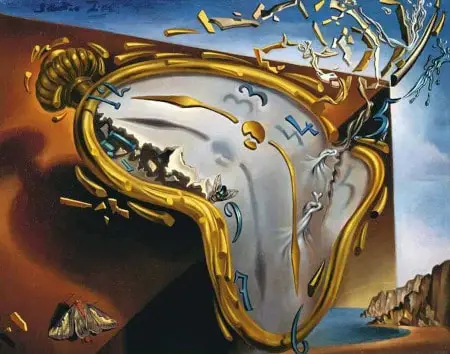
During his lifetime, he produced thousands of paintings as well as drawings, prints, sculptures, and theatre designs; wrote books; designed furniture; and acted on stage and screen (as a long-suffering husband). He died at age 84 in Spain after a fall caused by heart failure.
Throughout his life, Dali made many masterworks using many materials. It is worth covering how these materials affect an artist’s style and methods.
What Materials Did Dali Use?
Most of Dali’s famous artworks are his paintings. Although Dali was proficient with mediums of all kinds, he certainly had a favorite one, and he worked exclusively in two dimensions.
As a general rule, Salvador Dali used oil on canvas as his painting medium. His collection also includes drawings, lithographs, and watercolors. Many of his pieces use ink wash, charcoal on paper, or cardboard. In one self-portrait, he used a strip of bacon.
This painting is called Self Portrait with Grilled Bacon, and there’s a real strip of bacon in between him and his painting father. In his autobiography, The Secret Life of Salvador Dali, Dali explains that he wanted to evoke emotion and fascination through shape and color rather than perspective, as it could be viewed as limiting.
I categorically refused to consider the surrealists as just another literary and artistic group. I believed they were capable of liberating man from the tyranny of the ‘practical, rational world’. I was going to become the Nietzsche of the irrational. I, the obsessed rationalist, was the only one who knew what I wanted: I was not going to submit to irrationality for its own sake, to the narcissist and passive irrationality others practiced. I would do completely the opposite. I would fight for the ‘conquest of the irrational’. In the meantime my friends would let themselves be overwhelmed by the irrational, succumbing, like so many others, Nietzsche included, to that romantic weakness.
Salvador Dali [1]
He used an array of techniques from applying paint to his canvas with his hands (instead of brushes) to embedding objects within his paintings. He was known for incorporating objects into multiple works. For example, the melting watches and clocks in The Persistence of Memory. He also embraced soft materials like cotton wool, which he worked into Swans Reflecting Elephants to show their metamorphosis.
This type of optical illusion was common in Dali paintings and used the figure-ground phenomenon, which makes it ambiguous what is the subject of an image and what is the background. [4]
Some of his earlier works (and some personal possessions) are collages – created by gluing different types of paper together to make a seamless whole. This technique is evident in his piece The Lovers. The thicker layers emphasize his use of distortion and non-traditional shapes in many of his paintings.
| # | Dali’s Most Famous Paintings | Year Painted | Current Location |
|---|---|---|---|
| 1 | The Persistence of Memory | 1931 | The Museum of Modern Art, New York, United States |
| 2 | Metamorphosis of Narcissus | 1937 | Tate Modern, London, United Kingdom |
| 3 | Slave Market with the Disappearing Bust of Voltaire | 1940 | Salvador Dali Museum, St. Petersburg, Florida, United States |
| 4 | Christ of Saint John of the Cross | 1951 | Kelvingrove Art Gallery, Glasgow, Scotland |
| 5 | The Temptation of St. Anthony | 1946 | Royal Museums of Fine Arts of Belgium, Brussels, Belgium |
| 6 | Swans Reflecting Elephants | 1937 | Private Collection |
| 7 | The Burning Giraffe | 1937 | Fine Arts Museum of Basel, Basel, Switzerland |
| 8 | Cabaret Scene | 1922 | Private Collection |
| 9 | The Hallucinogenic Toreador | 1968-1970 | Salvador Dali Museum, St. Petersburg, Florida, United States |
| 10 | The Disintegration of the Persistence of Memory | 1952-1954 | Salvador Dali Museum, St. Petersburg, Florida, United States |
His artistic vocabulary includes many paintings and images with symbolic skeletons, skulls, and other bones and religious symbols that remain one of his most famous subjects – especially later in life when surgery on his jaw left him unable to speak more than a few words at a time during interviews and lectures. [6]
Many point to his fascination with death as influenced by both of his parents’ deaths while he was very young. Another recurring theme is eroticism and sexual imagery; it was apparent throughout much of his earlier work (especially before marriage) but became more muted once he settled down with Galain-Levert.
His opinion pieces provide interesting perspectives from all walks of life including psychology, philosophy, mythology, art history, literature, music, mathematics, science, and film. Given Dali’s eccentricity and growing popularity, people wanted answers to why he worked in such an unusual way.
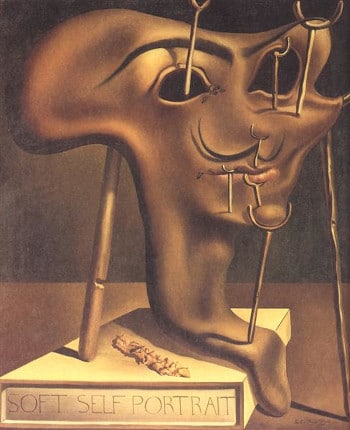
Was Dali a Cannibal?
Dali was known for using eccentric behaviors to create controversy around himself and his artwork. By stirring public debate, it put Dali in the spotlight and attracted attention to his paintings and messages.
As a whole, the painting Autumnal Cannibalism began rumors that Dali was a cannibal. It depicts two figures eating each other while embracing. Dali also created a cookbook with disturbing surreal food recipes. He served these meals at exclusive private parties away from the public eye.
There is little evidence to support these rumors and may even originate with his critics. When someone is breaking the mold or thinking out of the box, people sometimes accuse them of strange behavior because they fear the unfamiliar.
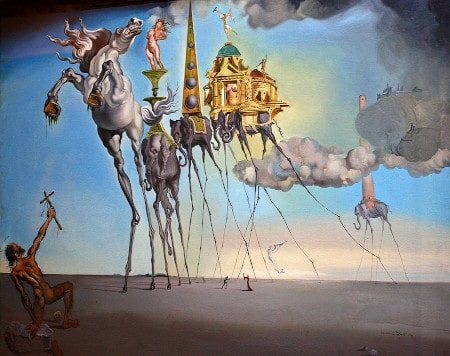
After he became famous worldwide, people often wondered how he got his start and where he learned to paint.
Was Dali Classically Trained?
Some artists learn to create on their own and others are taught formally. Sometimes this teaching is done by a mentor, and sometimes it is part of an institution like a school.
In total, Salvador Dali’s classical training augmented his own style and flair. He attended the Municipal Drawing School in Figueres starting in 1916. In 1922, Dali moved to Madrid and attended the San Fernando Royal Academy of Fine Arts until 1926.
He used this prestigious skillset to grab the world’s attention and captivate art lovers everywhere. With such a unique style, it is natural to wonder whether Dali had formal training. Dali always enjoyed shocking people by asking ‘why not?’ If it didn’t make sense in traditional terms, then why not follow his gut anyway and see where it would lead him?
In the first place, in 1950, I had a ‘cosmic dream’ in which I saw this image [Christ of St. John of the Cross] in colour and which in my dream represented the ‘nucleus of the atom.’ This nucleus later took on a metaphysical sense; I considered it ‘the very unity of the universe,’ the Christ!
Salvador Dali [3]
Dali’s masterpieces are impressive and this unique and surreal style causes many to question how long they took to create.
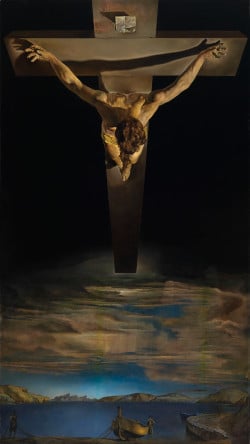
How Long Did It Take Dali to Paint?
Some painters like Picasso were known to create their works quickly. Others like Rothko spent months or years perfecting their painting. Salvador Dali’s striking paintings make the viewer wonder how much time was needed to make them.
As a general rule, the length of time Salvador Dali needed to paint is not known. Dali was a secretive artist who used spectacle and showmanship when interacting with the public. Dali’s public persona is part of his style, and controversy attracted attention to the 1000s of paintings he created.
Since he controlled the presentation of his artwork in the public eye, keeping it secret when and why his paintings were made added to the mystery and debate. In some cases like with The Persistence of Memory, we know the sequel painting The Disintegration of the Persistence of Memory came twenty years after the original and took two years to perfect.
Dali was also known to have unusual habits when creating art. Sometimes he walked around with a lobster glued to his ear (so it could devour all those noisy thoughts). The bottom line is that there were never any rules about how he worked. Dali just went with whatever made sense to him in each moment.
His paintings remind the viewer of dreams and use illusion and optical tricks. A classic example of this is Galatea of the Spheres. [5] What artistic movements did Dali explore?

Salvador Dali Paintings: Dreams, Surrealism, and Maximalism
The Surrealist movement led by artists like Salvador Dali can be traced back to 19th century Paris. Rather than aiming for realism, surrealists celebrated imagination in all of its forms-including dreams and nightmares.
Though Surrealism officially began in 1929, paintings and drawings by Dali himself date as far back as 1917. At that time, he was working under Pablo Picasso’s tutelage. By 1920, he began exhibiting with other surrealists like Andre Breton and poet Guillaume Apollinaire. [7]
Dali emerged as one of its most prolific leaders when a group of them staged a show called The Exposition of Surrealist Painting at London’s Burlington Gallery in 1936. The exhibition featured more than 200 works from 26 artists including Dali and his wife Gala.
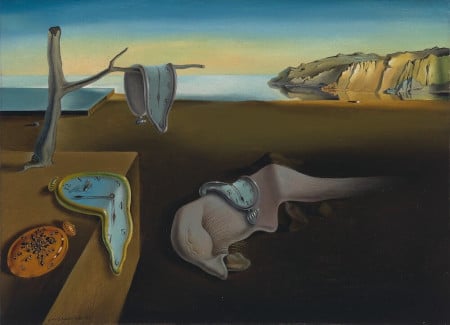
His next big breakthrough happened during World War 2 when his work started becoming famous worldwide – especially after a Life magazine photographer took photos of him painting at home.
He gained additional attention for an exhibit held at New York City’s Museum of Modern Art just before America entered WW2; it had to be moved to Chicago because some critics worried it would cause anti-American sentiment overseas.
Later on, after he lost his right thumb in a car accident, Dali went through a period of inspiration known as Surrealism and Feminine that featured work focused on motherhood and women.
Dali’s Surrealism: In Summary
Whether you think Salvador Dali was brilliant or bonkers doesn’t really matter. His personality helped make him great in the eyes of many and influenced art forever. Dali created unique works of art that capture the imagination and inspire.
Interested in learning about the style of another famous artist? Picasso was one of Dali’s contemporaries. Check out my post about Picasso’s artistic style!
References
- Dali, Salvador. Diary of a Genius. New York: Doubleday, 1965. Internet resource. https://www.worldcat.org/title/diary-of-a-genius/oclc/712591947
- Dali, Salvador, and Andre Parinaud. Comment on Devient Dali: Les Aveux Inavouables De Salvador Dali. Paris: R. Laffont, 1973. Print. https://www.worldcat.org/title/comment-on-devient-dali-les-aveux-inavouables-de-salvador-dali/oclc/463510026
- Descharnes, Robert, and Eleanor R. Morse. Salvador Dali: Album. New York: Harry N. Abrams, Inc., Publishers, 1985. Print. https://www.worldcat.org/title/salvador-dali-album/oclc/895617330
- Fisher, Gerald H. “Ambiguous figure treatments in the art of Salvador Dali.” Perception & Psychophysics 2.8 (1967): 328-330. https://link.springer.com/content/pdf/10.3758/BF03210066.pdf
- Martinez-Conde, Susana, et al. “Marvels of illusion: illusion and perception in the art of Salvador Dali.” Frontiers in human neuroscience 9 (2015): 496. https://www.frontiersin.org/articles/10.3389/fnhum.2015.00496/full
- Hawley, Jessica R. “Religious Symbolism in Salvador Dali’s Art: A Study of the Influences on His Late Work.” (2012). https://dc.etsu.edu/cgi/viewcontent.cgi?article=1038&context=honors
- Chapman, Michael. “(re) Findings: Discovery and memory in the architecture and legacy of surrealism.” Interstices: Journal of Architecture and Related Arts (2012): 51-59. https://www.interstices.ac.nz/index.php/Interstices/article/download/437/424
- Kováry, Zoltán. “The Enigma of Desire: Salvador Dalí and the conquest of the irrational.” PsyArt (2009). https://www.academia.edu/download/32016021/The_Enigma_of_Desire_-_Salvador_Dali_and_the_conquest_of_the_irrational.pdf
